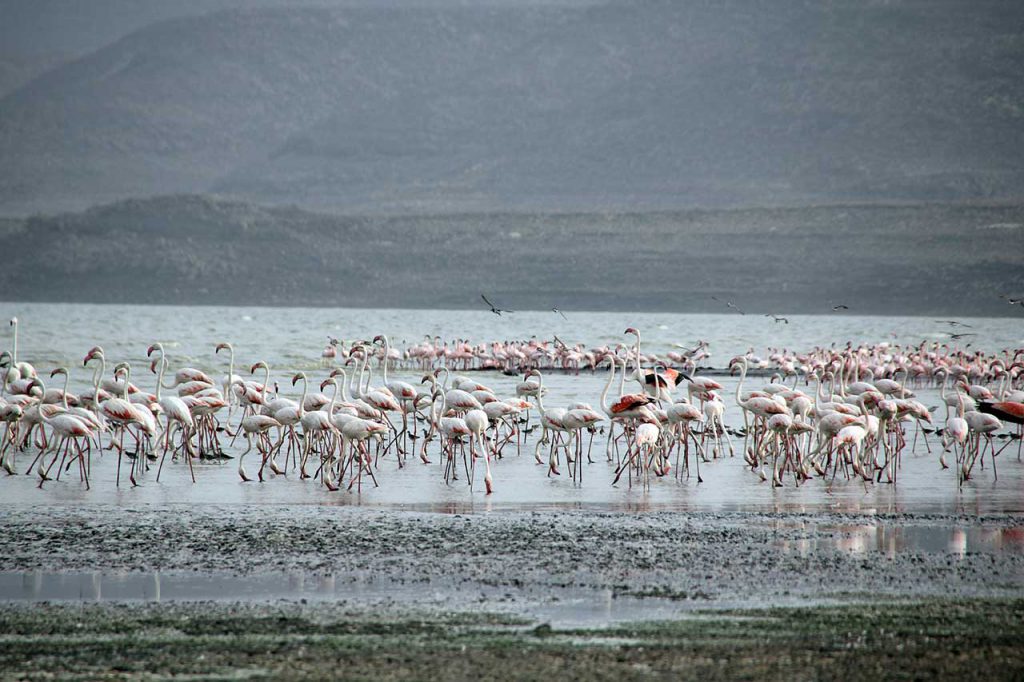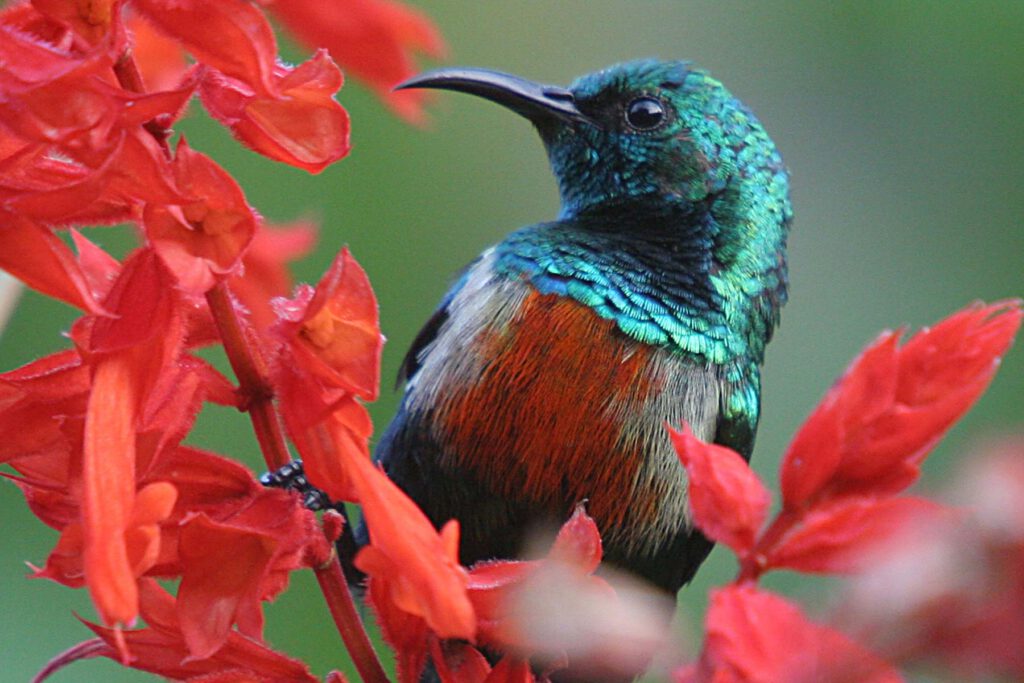
Abijata-Shalla National Park: This park was primarily created for its spectacular numbers of aquatic birds, especially Great white Pelican and Lesser Flamingo; the bird breeding islands in Lake Shalla, and its scenery. It is a famous and significant Ornithological Site in the country.
Location: the park is located 207 km south of Addis Ababa on the Shashamene – Hawassa road. The general area is within an altitude range of 1540-2075 m asl. The Head Quarter is situated at 56km from Zeway town at a place known as Dolle.
Rainy season: The climate of the park is generally dry. Located in a rainfall deficit area of the Rift Valley, it receives an annual rainfall range between 500 and 700 mm during the two wet seasons, with the small rain periods are March to April and the main is June to September.
Temperature: The minimum and maximum temperatures range between 50C and 450C, respectively.
Ecological zone: Rift Valley
Vegetation types: Acacia-Euphorbia woodlands savanna
Major wildlife species

Waterfowls: the most notable have been the Great White Pelicans, Storks, Flamingoes, Egrets and Herons, Cormorants and Plovers.
Mammals: Grant’s gazelle, Colobus monkey, Grivet monkey, Warthog, Greater kudu, Klipspringer, Oribi and Jackals.
Endemic mammals: the park has endemic small mammals including Scott’s Hairy Bat, White-toothed Shrew, Mahomet’s Mouse, White-toothed Rat, Ethiopian Grass Rat, Harrington’s Scrub Rat.
Endemic birds: Yellow-fronted Parrot is endemic to the park.
Major physical / geological features: these include Lakes Abijata and Shalla, hot springs, lava caves and four islands used as nesting site for different bird species.
Adjacent people: Oromo
Attractions: its chief attractions are the scenic beauty of the Lakes, and the wealth of birdlife they support. The park derives its name from the two lakes of Abijata and Shalla that together make up for over 50% of the total area. The park is one of the most scenically beautiful spots of Ethiopia, possessing a unique aspect of blue lakes fringed with flat-topped acacia trees and alive with a spectacular wealth of avifauna.
The avifauna of the lakes is still in abundance and remains the major attractions of the locality. A great number of the bird species that prevail in the lakes are seasonal migrants and the area thus is a paradise to ardent bird watchers.
The lakes as such provide an important staging point for thousands of migratory birds but perhaps the bird of greatest interest to a nature lover and of concern to the world is the Great White Pelican. The Pelican breeds in its thousands (up to 12,000 pairs in the course of a year) on a small island, Tulu Island, in Lake Shalla.
This Lake being too alkaline is of low biological productivity, so the bird does its fishing elsewhere, mainly in the northern waters of Lake Abijata. This park is especially known for its significance to migrating wetland birds from Palaearctic during the northern winter months.
It serves as a stopover for a high population of birds including Shoveler, Black-winged Stilt, Avocet, Little Stint, Ruff and White-winged Black Tern. Lake Abijata is also specially known for the large number of Lesser Flamingo and as a major feeding ground for the Great White Pelican.
Lake Chitu: is a small Crater Lake offers a spectacular view of colony of flamingos feeding on blue- green algae.
Look-out points: designated near Head Quarter to give contrasting views of both lakes.
Visitor accommodations: several hotels are located at proximal townships to the park such as Arsi Neghelle (c. 22 km), Ziway (c. 56 km) and Shashemene (c. 50 km). There are also hotels and lodges situated along Lake Langano (Bekele Molla, Webe Shebelle, Bishan-Gari, Abulle Bassuma and Savannah). Camping inside the park can be arranged pursuant to park permit and information.
When to visit: the park is accessible at all times of the year.
Access: road